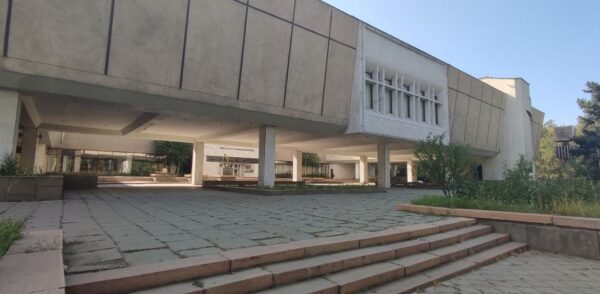Discover the vibrant and exciting history and culture of Kyrgyzstan through the fascinating museums of Bishkek. Each museum offers a unique look into the country’s heritage, natural wonders, and historical significance. Whether you are interested in fine arts, the life of a Soviet hero after whom the city was once named, or the diverse wildlife of Central Asia, Bishkek’s museums have something to offer every visitor.

1. The Gapar Aitiev Kyrgyz National Museum of Fine Arts
Named after the renowned Kyrgyz artist Gapar Aitiev, this museum was established in 1935 as a national gallery and has grown into the premier art institution of Kyrgyzstan. Its current home was constructed in 1974, housing a remarkable collection of about 18,000 works. Visitors can explore paintings, sculptures, drawings, and decorative arts, all representing the rich artistic heritage of the region.
Kyrgyz Arts and Crafts
One of the museum’s highlights is its collection of traditional Kyrgyz arts and crafts, which includes intricate embroidery, felt products, wood carvings, patterned weaving, leather embossing, and exquisite Kyrgyz jewelry. The museum’s golden collection features masterpieces by Kyrgyz art legends such as Chuikov, Aitiev, Akylbekov, and Herzen, showcasing the diverse artistic styles and directions from various generations.
The museum also boasts an impressive collection of Russian paintings from the 18th to 20th centuries, offering a glimpse into the development of Russian fine arts during this period.

As one of the leading museums in the country, the National History Museum of the Kyrgyz Republic serves as a vital repository of Kyrgyz culture and history. The museum’s collections reflect the traditions, daily life, and rich cultural heritage of the Kyrgyz people, from ancient times to the present.
With around 90,000 artifacts, the museum’s exhibits include archaeological treasures, ethnographic items, bronze and ceramic works, art crafted from precious metals, national musical instruments, traditional clothing, horse equipment, and felt products, providing an in-depth look at the nation’s past.

3. Mikhail Frunze State Memorial House-Museum
During the Soviet era, Bishkek was named Frunze in honor of the military strategist Mikhail Vasilyevich Frunze, who spent his formative years here. The house where he grew up has been preserved almost exactly as it was, both inside and out. Visitors can view personal photographs, drawings, belongings, and household items from his life.
In 1967, a modern museum structure was built around the original house, which now serves as the focal point of the museum’s exhibits. The museum in Karakol, a branch of the memorial, houses over 10,000 artifacts, including Frunze’s clothing, furniture, state awards, and personal weapons, many donated by his family.
The Zoological Museum is a vital educational and scientific hub, offering visitors a glimpse into the natural world. The museum’s expert guides specialize in biology, geography, and ecology, ensuring a comprehensive and engaging learning experience for visitors.
The Oak Park Gallery offers an immersive experience into Central Asia’s diverse wildlife. The museum showcases the fauna of the Tien Shan mountains and features an impressive collection of birds and butterflies, making it a must-visit for nature enthusiasts.

